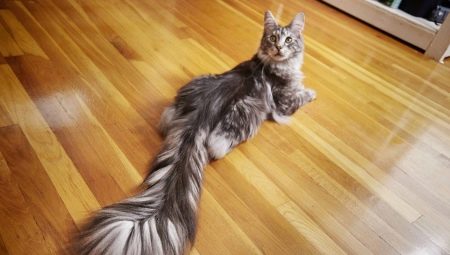A long and luxurious tail can safely be called one of the main advantages of a cat. Returning home from work, it's nice to see that you are greeted at the doorstep by a pet with a gentle and soft purr and a tail raised high from joy. Nature gave these incredibly affectionate animals a tail not only for a luxurious appearance. The whole point here is that a long or short tail is a rather multifunctional element of the cat's body.
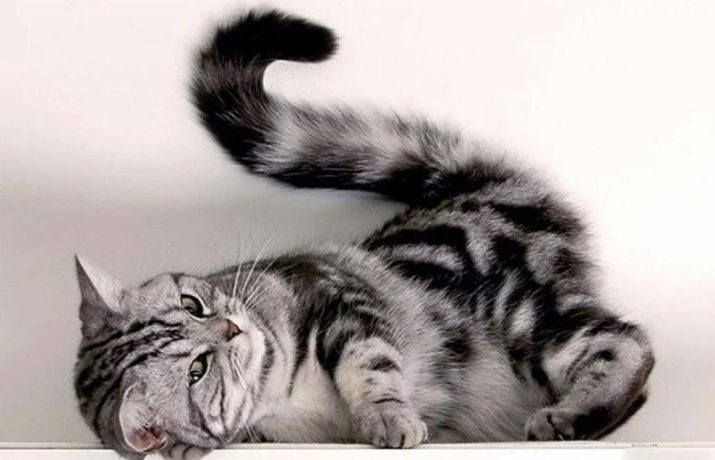
Structure and shape
The tail is a natural extension of the cat's spine. The tail of an animal consists of such three parts as:
- the root is from 4 to 6 integral vertebrae;
- the stem is not fully developed parts of the spine; it has the shape of a cylinder;
- the tip is thinner vertebrae that have an acute shape.
Cartilages and joints located between all vertebrae are necessary for excellent flexibility and increased mobility of the animal. The average tail length can be up to 27 cm, but in a number of well-known and expensive breeds, for example, Maine Coons, it can grow up to 40 cm. In bobtail, the tail, on the contrary, is very small, barely noticeable, only 3-4 cm. The tail of males is most often 2-3 cm longer than that of a cat of the same breed.
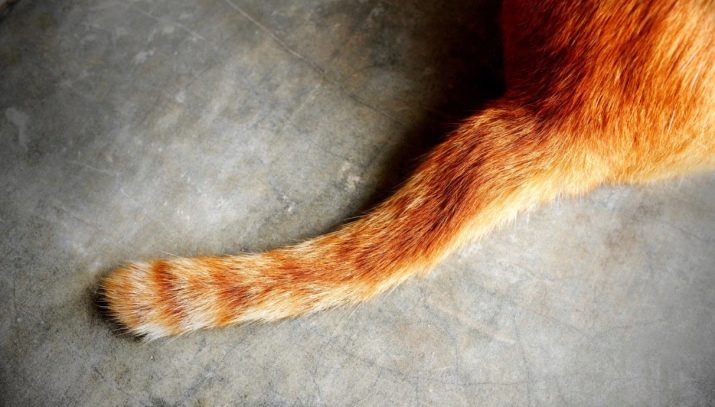
Functions
Cats quite actively apply the tail throughout their lives. Sometimes a cat tail can play as much importance for your cat as his main pride is a mustache. The entire tail is almost penetrated by the finest nerve endings, which are directly related to the central nervous system and allow your pet to feel better in the environment. With the help of such an important part of the body, the animal seems to “feel” all the space next to it, which significantly improves its neat movement, even in a state of complete darkness.
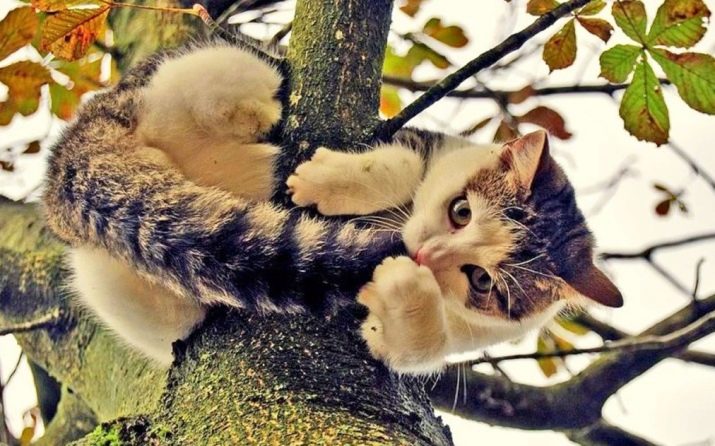
Balance
Quite often you can hear stories that the cat fell from a great height, while remaining completely unscathed. One reason for this amazing ability is tail balancing. During the jump or in the fall, the pet’s body completely maintains its balance, which just allows the animal to calmly land on all four legs.
The presence of a balancer for the animal gives him the opportunity to climb very tall structures and trees without much difficulty, and then make his way along very thin, bending branches, jump over them or carefully descend.
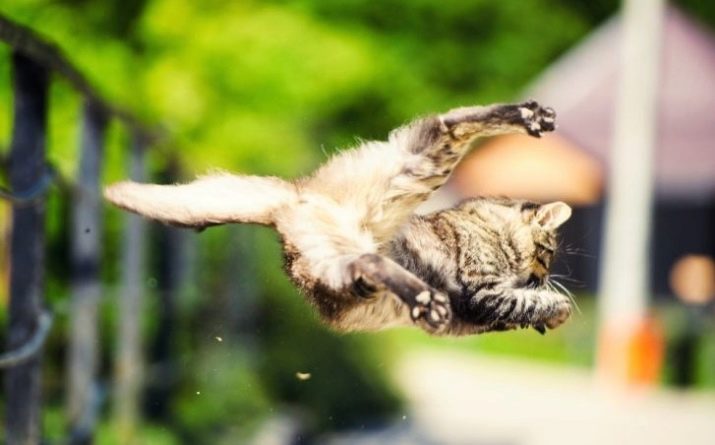
Steering wheel
When hunting, the tail, almost like a rudder, allows the animal to make various kinds of turns. The tail rotates very actively with all the movements of the animal, asking his body a certain direction.
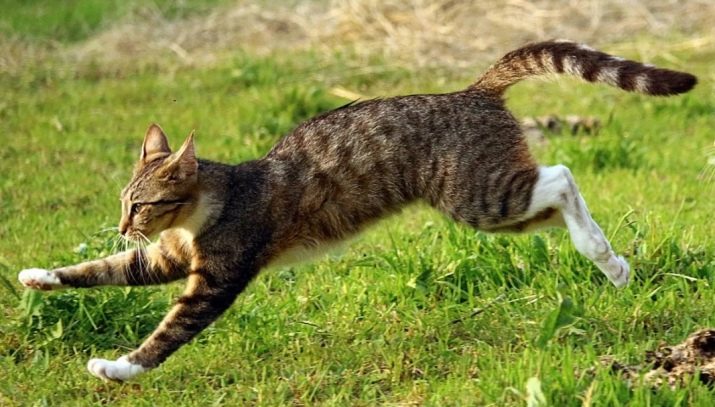
Thermoregulation
During the summer heat, the cat uses its tail like a fan - this is an interesting fact, few ordinary people know at all. Thus, the animal lowers its own body temperature and saves its body from possible overheating. And if the cat’s body does not have enough heat, the pet will begin to curl into a compact ball, and with its tail it will cover its nose and eyes - this is done to reduce heat loss.
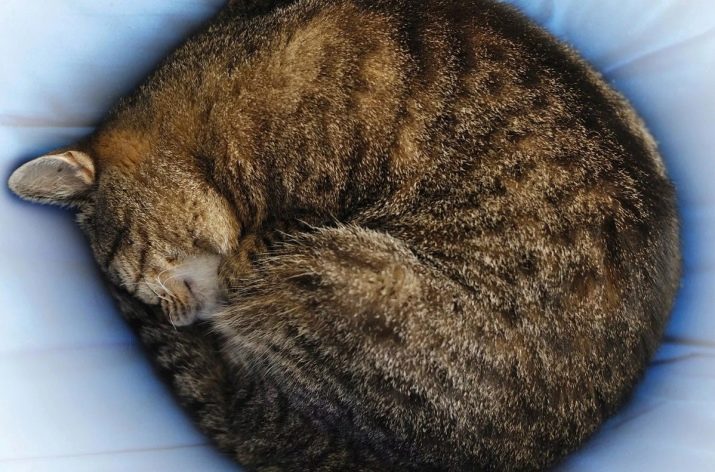
Frightening enemies
When a cat is seriously scared, her hair will immediately stand on end, and her maximally fluffy tail will be raised high and curiously curved in an arc. With the help of this pose, the pet tries to seem much more than it actually is. Too many representatives of the animal world resort to such a trick (to create a visual illusion of an increased body size) in order to avoid a potential collision and intimidate enemies.
In the wild, any bite can, in principle, become fatal, for this reason even among close relatives there are special rituals that allow you to determine who is in charge without a fight. For example, many cats will prefer a long period of time to howl terribly terribly and brazenly spin around each other before actually grappling in a fight. A luxurious, large fluffy tail in a similar situation will help its owner to obtain the much-needed superior power.

Means of communication
It is worth paying attention to the fact that cats use their tail as one of the devices that are actively used for full communication. Remember how your pet suddenly begins to shake its tail in moments of serious irritation, or it twitches strongly around, how it fluffs up its pride in the form of a tail and lifts it if something unfamiliar scares the animal.
In combination with the position of the ears and the expression of the pet’s eye, the amplitude of movement of its tail helps to draw the most correct conclusions about how it will behave in the very near future. For example, if the pet’s tail suddenly starts to rush to the sides, and its ears are firmly pressed to the head, this means that your pet is carefully preparing for the attack and is about to rush into battle.
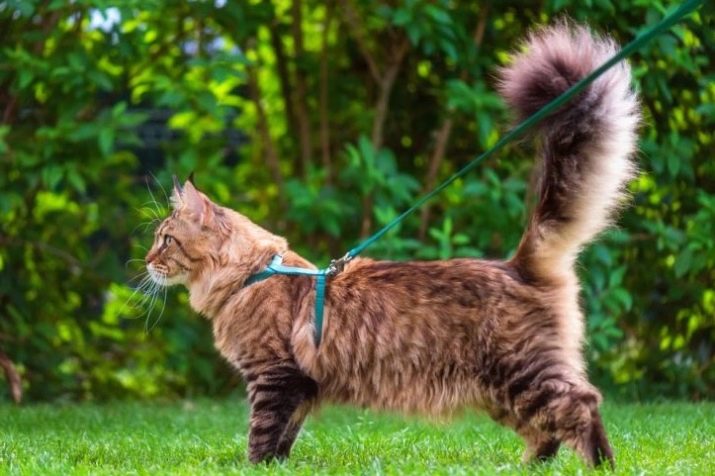
Hunting
During its hunt, the cat lowers its tail as low as possible and tries to keep it parallel to the surface of the earth. In certain cases, you can even see a slight twitching of the tip of the tail - in such a simple way the animal tries to restrain its increasing excitement.
It is worth explaining how, without such an important element as the tail, those pets do that are born completely without tails or remain without their tail due to misfortune or due to the stupid will of the owners. Those who accidentally lose their tail can lose their grace when moving and confidence in their walk for a long time and they will have to learn to live on without such a convenient balancing tool.
Those who, according to their natural data from birth, do not have such a part of the body as the tail, as a rule, have elongated and rather muscular hind legs - to some extent this compensates for their lack of a chic tail.
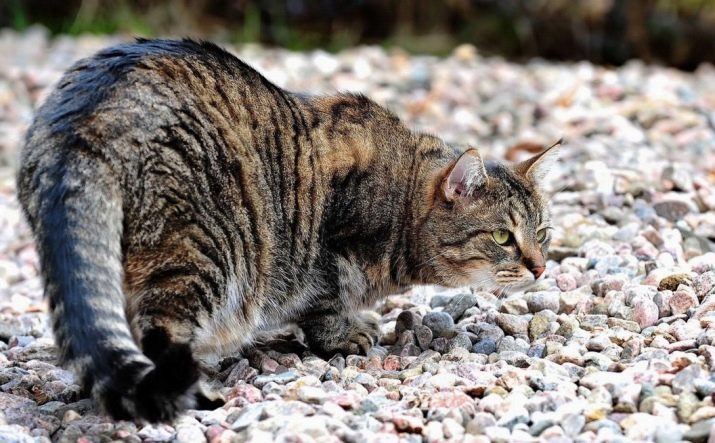
Health indicator
By the state of the coat of hair on the tail, you can find out about those diseases that a particular pet has. If the cat has hair in the sacral region at the very base of the tail, then the cat obviously lacks vitamins and various trace elements in the body, which can be corrected with a fortified diet. Loss of hair on this part of the body can also indicate the presence on the animal’s body of lichen, fungus, water-eating, or allergies.
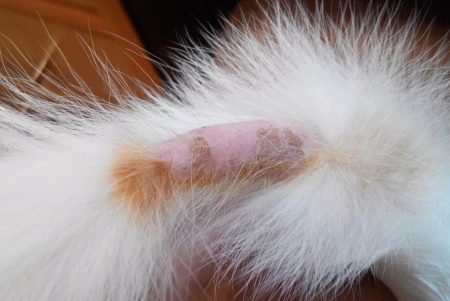
Comfort and entertainment
Cats also need a tail for comfort and play. An animal that wants to stretch itself and have fun, in those moments when nothing within reach is able to attract his attention, can fully concentrate on its own tail. After all, he is actively moving all the time, and this perfectly imitates a potential victim, which you can hunt for.
When a cat runs after its tail, and then catches it, it begins to realize that it is only part of its own body, not an enemy or a victim. After realizing this fact, as a rule, the animal begins to intensively care for the tail. When playing, the cat itself will never harm herself, so do not stop it from playing with its tail.
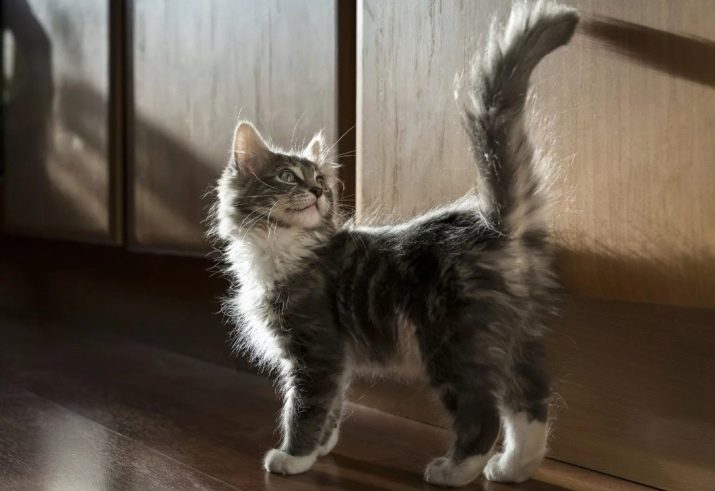
Is it possible to do without it?
Very often, homeless cats lose their tails as a result of some kind of injury, with pets of this kind, accidents occur much less often, especially if they don’t go out and climb trees for this reason. A number of breeds of the tail generally do not have from birth or is it so small that it is almost invisible. Many owners of animals ask a completely rational question - is it possible for cats to do without this organ?
If the tail is absent in a thoroughbred animal and is a characteristic feature of its breed, then the tail is not of great importance for such pets as for pets that have lost a tail due to injury or serious illness. In principle, even without a tail, an ordinary cat can live the same good life as with a tail. Perhaps part of this life will no longer be so comfortable, but the pet will be able to convey all its feelings with eyes, meow, paws.
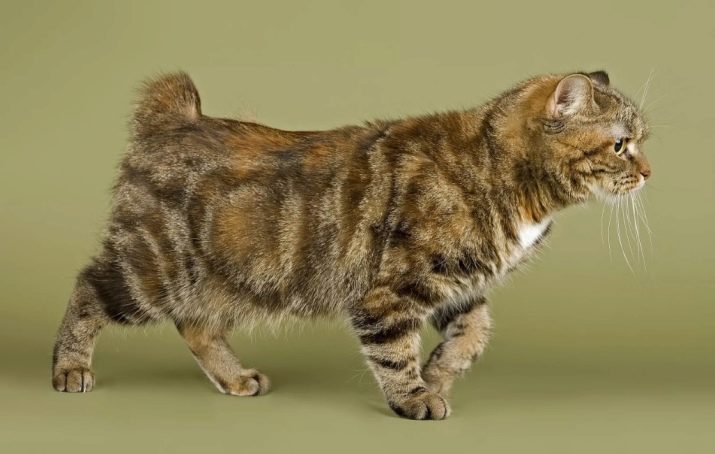
What do tail movements mean?
The importance of a large or small tail for a pet is quite difficult to overestimate. If you take a closer look at how a cat’s tail moves, you can easily understand what your furry friend’s mood is, how he feels, whether your pet has a desire to chat, or, conversely, wants to be left completely alone . Tail movements can mean a lot.
- Comfort. When the animal is comfortable, its tail is in a position of complete rest - that is, it does not move at all. Sometimes the pet can lazily twist the tip of the tail, if the tail hangs in a completely normal way. If he is as relaxed as possible, this will also mean that your favorite animal is in a state of calm. The fact that the tail neatly lies around the sitting or lying cat can also speak about the excellent mood of the animal.
- Joy. In this case, the tail will be friendly up or slightly bent by the arc.
- Curiosity. It seems as if the cat is listening carefully to something, while slowly wagging its tail.
- Playful mood. When a person wants to stroke a cat, and his tail is apparently straining and trembling a little - the pet is ready for an aggressive game, which means it can seriously scratch it. Often the playful mood of the animal can be expressed in its strong swing.
- Irritation. By the cat, this state is immediately visible - he begins to rush about nervously, bypassing his master.
- Fury. The animal’s coat suddenly stands on end over its entire body. The tail moves sideways and fluffs. The back arches sharply, a furious meow and a snort are heard. In this case, you need to be as careful as possible, as the mood of your furry pet is very fighting and aggressive.
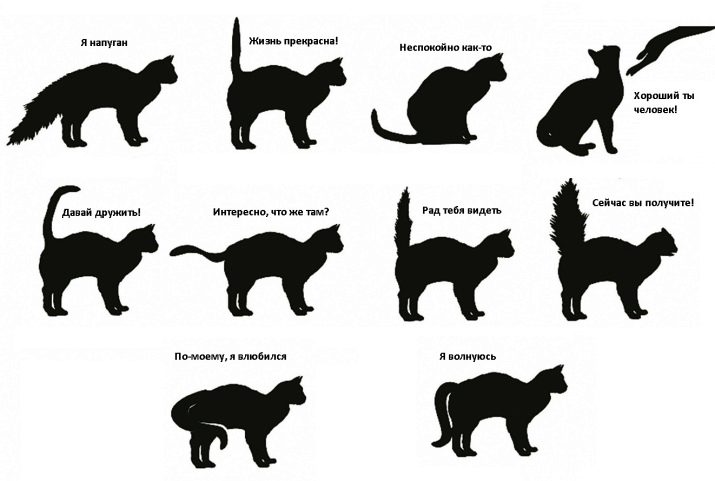
If you see tousled hair on the back and on the tail of your cat, it means that your pet is seriously excited. A similar kind of condition can arise in him from fright or from an overly active game. You can quickly reassure the cat with a light stroking. If a cat holds its ponytail at an angle of 45 degrees - this 100% indicates that it treats others with distrust.
If the cat has its own tail between its paws, it will mean that it is scared and will not resist, this is a clear sign of recognition of defeat in animals.
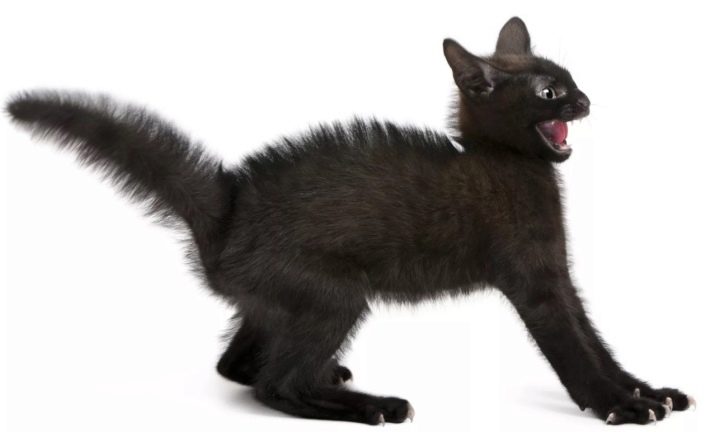
It often happens that when there are too many people in the house, the cat rises and the tail begins to twitch. This means that the cat is happy, but only the presence of its owners. If the cat is extremely interested or enthusiastic with something, then the tip of the tail will actively twitch. If the cat wags its tail strongly from side to side, it means that there is a conflict inside your pet. The animal must make some choice, but can not quickly decide what to do right.
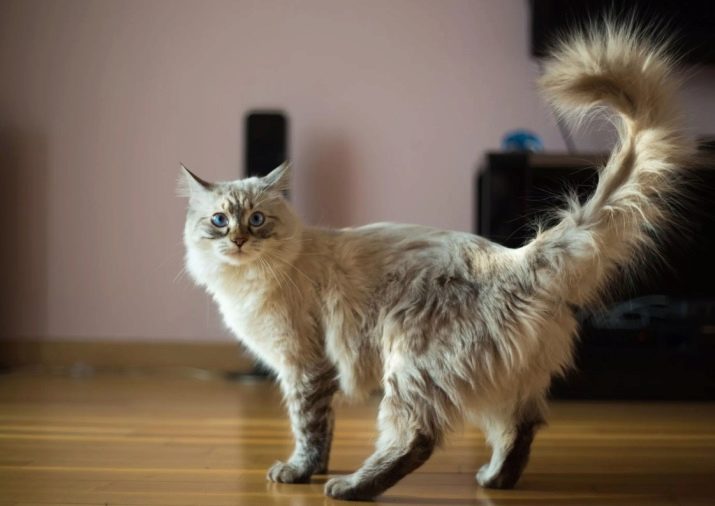
Why can’t you pull and pull?
The tail is an extremely important organ of the cat’s body, since many nerve endings are located in it. Exactly because of this reason it cannot be pulled too much, as such careless handling of a pet can lead to the loss of legal capacity of this special part of the body. And his injury, as it may sound strange, can significantly negatively affect the functioning of the kidneys and intestines, the reproductive system and even the hind legs.
Many cats simply do not like being even slightly touched by the tail and immediately stand in a defensive position.

If your animal suddenly fell extremely unsuccessfully, then its unnatural appearance will tell you about the dislocation of the tail. In this case, you will need to see a doctor. At home, you should not try to treat the cat yourself. In addition to x-rays, in the veterinarian the animal will be given a special splint or tight bandage on the tail.
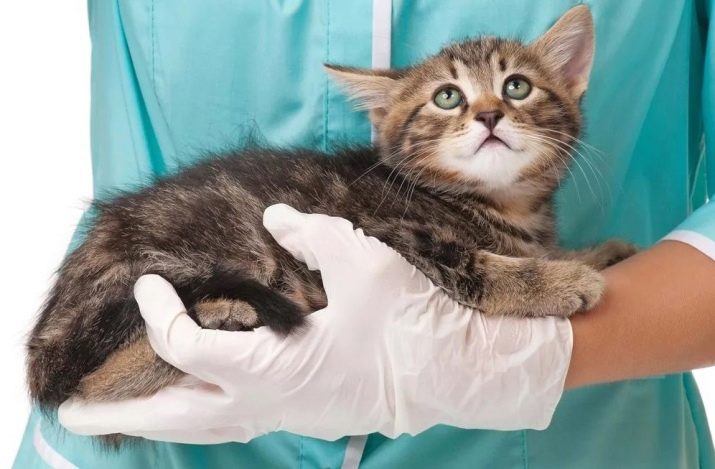
The overall health of your furry friend will also be reflected in the density of his hair on the tail. Often the tail begins to bald. This may be due to the presence of dermatitis or eczema, as well as tell about problems with the stomach and the presence of many other diseases. Sometimes it can even be about serious stress. In any case, you need to find the cause as soon as possible before starting treatment, so you still have to go to the veterinarian. He will carefully examine your pet and prescribe the right treatment.
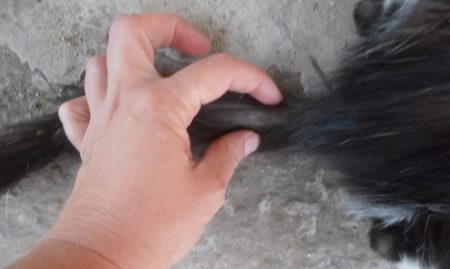
About why a cat needs a tail, see below.
